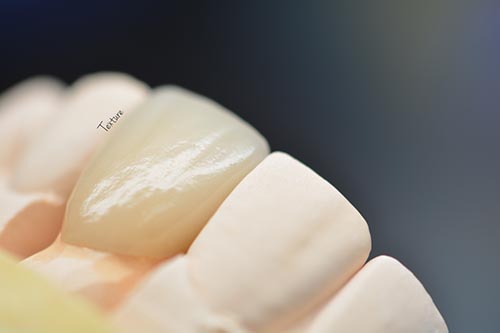
It is essential that all dental office owners understand employee laws within the dental industry. Having a deep understanding of these laws may protect you from litigation in the future & help you draft a clear employee manual that better serves your team.
Lets jump right in . . .
Table of Contents
Paid Sick Leave in California
In California, employers are required to give employees 3 days of paid sick leave. To qualify, an employee must work for the same employer for at least 30 days within 1 year. New employees must also work for a 90-day period before taking sick leave
Employees can offer sick time through an accrual or up-front policy. Through an up-front policy, employees entire annual sick leave amount is provided at the beginning of the year.
Through an accrual policy, employees earn sick leave as they work. For example, for every 30 hours worked employees earn 1 hour of paid sick leave (up to 48 hours/3 days)
Employers must allow carry over of sick leave from one year to the next (up to max times), unless entire annual sick leave is provided at the beginning of the year.

This photo was taken w/ the same DSLR camera I use to take dental photos
Maternity Leave in Dental Office
There are multiple laws that can potentially apply to employees needing a leave of absence for maternity-related issues, child bonding time, or other health conditions.
- Family and Medical Leave Act (FMLA)
- California Family Rights Act (CFRA)
- New Parent Leave Act (NPLA)
- Pregnancy Disability Leave (PDL)
- Family Temporary Disability Insurance (FTDI) or “Paid Family Leave”
I. Family and Medical Leave Act
The Family and Medical Leave Act entitles eligible employees of covered employers to take unpaid, job-protected leave for specified family and medical reasons.
FMLA is federal legislature available to workers on a national level. The leave does not need to be taken in one continuous period of time.
What are eligible employees entitled to?
12 workweeks of leave in a 12-month period for:
- the birth of a child and to care for the newborn child within 1 year of birth
- the placement with the employee of a child for adoption or foster care and to care for the newly placed child within one year of placement
- to care for the employee’s spouse, child, or parents who has a serious medical condition
- a serious health condition that makes the employee unable to perform the essential functions of his or her job
- any qualifying exigency arising out of the fact that the employee’s spouse, son, daughter, or parent is a covered military member on “covered active duty,” or
26 workweeks of leave during a since 12-month period to care for a covered service member with a serious injury or illness if the eligible employee is the service member’s spouse, son, daughter, parent, or next kin (military caregiver leave).
Which employees are eligible to take FMLA leave?
- work at a location where at least 50 employees are employed by the employer within 75 miles
- have worked for their employer for at least 12 months, and
- have at least 1,250 hours of serve over the previous 12 months
II. California Family Rights Act (CFRA)
The California Family Rights Act entitles eligible employees of covered employers, in California, to take unpaid, job-protected leave for specified family and medical reasons. The leave does not need to be taken in one continuous period of time.
What are eligible employees entitled to?
Full-time employees may take up to 12 workweeks of leave in a 12-month period. Part-time employees may take leave on a proportional basis for the following reasons:
- to bond with an adopted or foster child or to bond with a newborn
- to care for a parent, spouse, or child with a serious health condition
- if employee has their own serious health condition
Which employees are eligible to take leave under CFRA?
- work at a location where at least 50 people are employed
- have worked for their employer for at least 12 months
- have at least 1,250 hours of serve over the previous 12 months
III. New Parent Leave Act (NPLA)
New Parent Leave Act (NPLA) helped to widen the scope of the CFRA, allowing eligible employees, working at companies with 20 to 49 employees in a 75-mile radius, up to 12 weeks of unpaid leave to bond with a new child.
EMPLOYEE MANUAL
STARTING A DENTAL PRACTICE? DOWNLOAD OUR FREE 20+ PAGE SAMPLE EMPLOYEE MANUAL
IV. Pregnancy Disability Leave (PDL)
Pregnancy Disability Leave is the leave a woman takes while she is disabled by her pregnancy or the childbirth. PDL is unpaid, job-protected leave for eligible employees.
The leave does not need to be taken in one continuous period of time. Under PDL, employers are also required to provide employee with a reasonable accommodation and transfer to a less hazardous or strenuous job. Employers can deny any reasonable accommodation request if they can prove it would cause undue burden.
What are eligible employees entitled to?
- four months of maternity leave while the disability continues
Which employees are eligible to take leave under CFRA?
- work at a location with 5 or more employees, and
- be disabled by pregnancy, the childbirth, or a related medical condition
V. Family Temporary Disability Insurance (FTDI) or “Paid Family Leave”
Family Temporary Disability Insurance is a program administered by the California Employment Development Department (EDD). The insurance provides paid leave for qualifying employees. However, this leave does not provide job protection or a right to return to work. Job protection may be provided under other laws as discussed above.
What are eligible employees entitled to?
- six weeks of paid leave to bone with a new child (either by birth, adoption, or foster care placement), or
- to care for a seriously ill family member (child, parent, parent-in-law, grandparent, grandchild, sibling, spouse, or registered domestic partner)
- partial wage replacement
Which employees are eligible for FTDI?
- be covered by State Disability Insurance (or a voluntary plan in lieu of State Disability Insurance)
Vacation Time Benefits in Dental Office
In California, employers are NOT required to provide any paid vacation time. If employers do decide to provide paid vacation time, the required paid sick leave can be incorporated into the paid vacation time
Employee Holiday Pay in Dentistry
California employers are NOT required to pay employees holiday pay when they close for business on official holidays. . . .
Businesses are also NOT required to close on any holiday or to give their employees the day off
However, employers must provide reasonable accommodations for employees who cannot work on certain holidays due to religious observances
If an employer does provide paid holidays, an employer is not required to pay an employee for the day if he/she leaves employment before the holiday arrives
Many employers will also require that the employee works the day before and after a holiday to be eligible for holiday pay.
Rest & Lunch Break Benefits
Under California law, non-exempt employees are entitled to a 10-minute, uninterrupted rest break for every 4 hours you work (or major fraction thereof).
For example, any employee that works 3.5 – 6 hours is entitled to one 10-minute break. If an employee works over 6 hours, they are entitled to two 10-minute breaks, and over 10 hours three 10-minute breaks.
Rest breaks must to the extent possible be in the middle of each work period
Rest breaks are paid and employer can require employees to stay on premises
If employer does not comply with break law requirements, they are required to pay one extra hour of regular pay for each day of violation
Employees that work over 5 hours are entitled to a 30-minute meal break (non-paid)
Employees can waive this meal period, if employer allows, and provided they do not work more than 6 hours in the workday. Employees can also agree to an on-duty meal break, which counts as hours worked.
Employees that work over 10 days are entitled to a second meal break of at least 30 minutes

Worker's Compensation
Workers’ compensation insurance is mandatory for all employers with at least 1 employee
An employer cannot ask employees to help pay the insurance premium
You must post the “notice to employees” poster in a conspicuous place at the work site
If the employee’s treating doctor reports that employee can return to work without restrictions, you usually must give them the same job and pay they had before injury
It is illegal for an employer to directly pay the medical bills for an employee injured at the work site. A claim must be filed for all injuries that require more than first aid.
That's it!
This is all you need to start taking incredible dental photos at your practice today. Purchasing proper dental photography equipment has changed the way I practice dentistry & is a must for anyone trying to elevate their dental career. The next section is dedicated to specialized accessories to aid in your photography techniques
Full disclosure: I receive a commission if you purchase the dental products through my referral links. This helps me run this blog & I appreciate the support.



